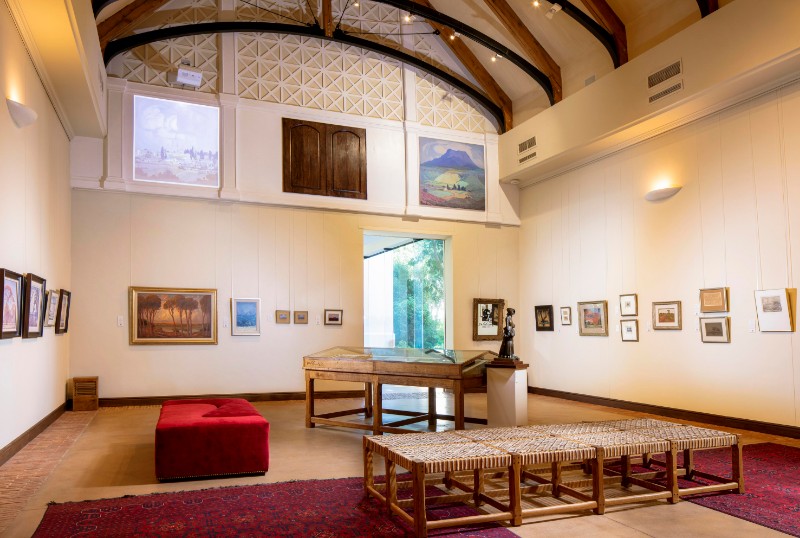As the permanent host to Jacob Hendrik Pierneef’s Heritage Collection, the La Motte Museum is delighted to present a recreation of what is probably the artist’s most famous work, the momentous Station Panels commissioned for the old Johannesburg Park Station.
The recreation in the La Motte Museum’s Pierneef exhibition space comprises a single column with double niches from the old Johannesburg Park Station. The panels are projected into the first niche, with a replica of the Amajuba panel displayed in the second niche. The reconstruction can be viewed at an installed height of between 3.5 and 9 metres, offering a glimpse of the initial intent of the work and providing insight into the creation and history of the artist’s most acclaimed public commission.
Building work on a new Johannesburg railway station commenced in 1926. At the time, advancement of tourism both to and within South Africa, was the responsibility of the South African Railways and Harbours. Being acquainted with both consulting architects, Gordon Leith (a lifelong friend since primary school days) and Gerhard Moerdijk, Pierneef was officially commissioned in 1929 to paint the 32 works. The works were to show the natural splendour of South Africa, indigenous trees as well as places of historical interest to encourage tourism and rail travel within the Union of South Africa.
The commission was monumental in scale and volume with 28 paintings having to fit within spaces ranging between 146 x 126-149 cm, and an additional four spaces of 145 x 31 cm. The panels were to be displayed in the arched walls of the station concourse, each in its allocated space at a height of 4,25 m. The square format and the height at which the panels were to be displayed presented Pierneef with the task of reconsidering and planning the landscapes accordingly, bearing in mind that they would be viewed from a distance and from below.
Pierneef adapted his colours subtly to match the soft tints of the marble columns in the hall and repeated this limited palette throughout the body of work for uniformity. Combined with meticulously constructed compositions of firm lines and geometrical structures, the depicted scenes exuded monumentality and calm.
The panels were unveiled to the public in 1932. The journey of the panels thereafter included two restorations and took them to exhibitions at various institutions from the Pretoria Art Museum, to the South African Railway Museum and Art Gallery, and the Johannesburg Art Gallery.
In 1990 the South African Transport Services became a public company with the formation of a large transportation network named TRANSNET. Dr Anton Rupert was approached by TRANSNET to negotiate the permanent loan of the panels to the Rupert Art Foundation and from 2002, all the panels were exhibited in the Jan Rupert Centre at Graaff-Reinet. In 2010 the panels travelled to the Rupert Museum in Stellenbosch where they have been housed ever since.
Today, these paintings are well protected and accessible to the public, but not exhibiting them in their original installation, means sacrificing their intended function of being seen within the larger context of the architectonic whole. This inspired the La Motte Museum’s recreation of the initial setting by producing a section thereof along with a visualisation of the panels.
The reconstruction does not claim to be a precise imitation of the Johannesburg Station Panel installation, but rather to offer visitors insight into the history of the creation and original purpose of this exceptional project. It serves to recall memories for those who saw the installation in real life, and to inspire the imaginations of those who didn’t.




